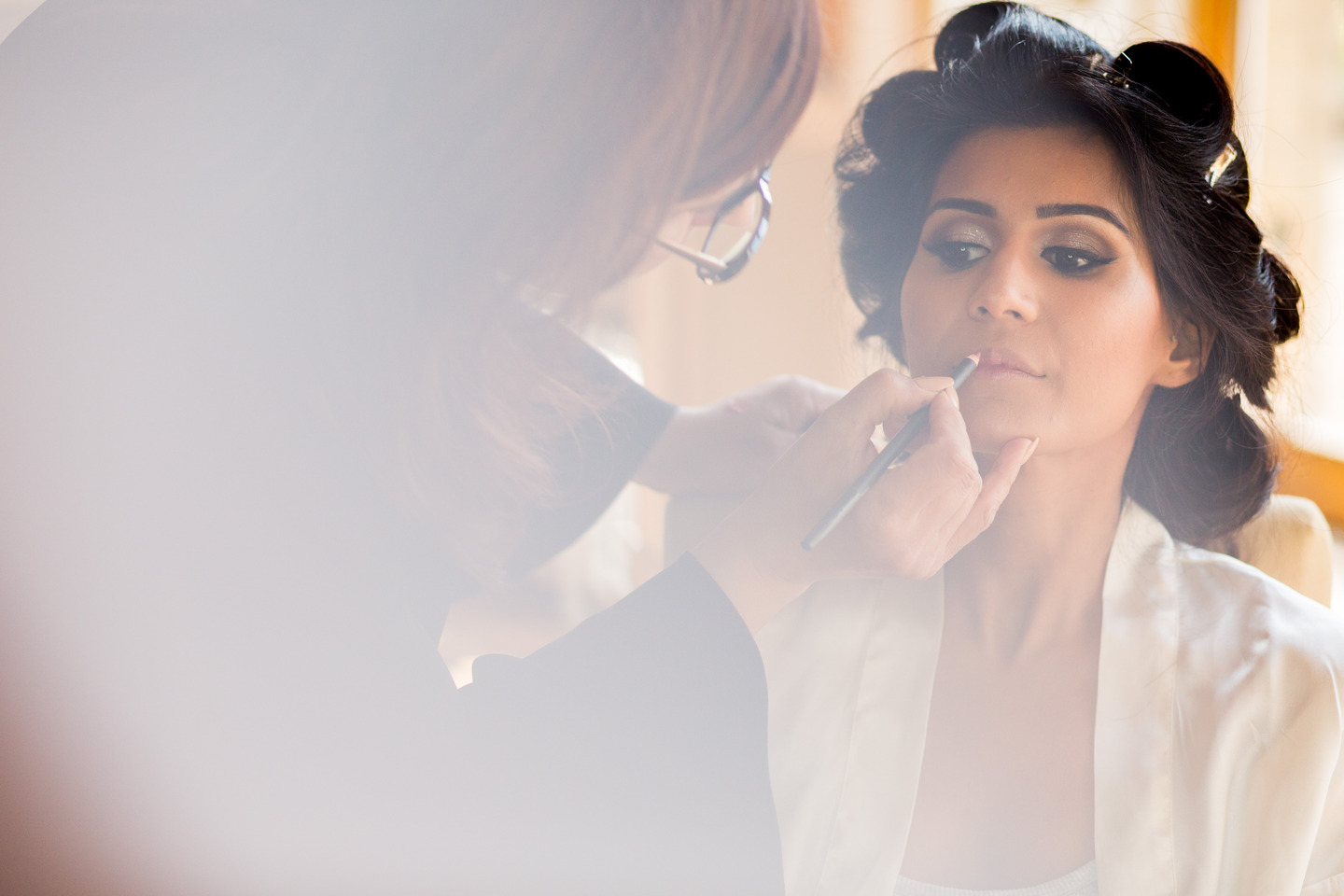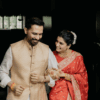A wedding is one of the most significant milestones in a person’s life, an event steeped in tradition, emotion, and symbolism. Every culture has its own unique way of celebrating the union of two people, yet across the world, one element remains constant: the bride is always the center of attention. From the moment she steps into the venue, all eyes are on her. Her outfit, her jewellery, her hair, and even the way she walks down the aisle or makes her grand entrance are meticulously planned to exude elegance and importance. Whether it’s a dreamy white wedding set against the backdrop of a European cathedral or an opulent Indian shaadi with a grand procession and vibrant festivities, the bride’s presence is meant to be unforgettable.
But what about the bridesmaids? They are an integral part of the wedding, carefully chosen as companions to the bride, yet they are always dressed in a way that is visually distinct—elegant but never quite as stunning as the bride. It is an unspoken rule, universally acknowledged but rarely questioned. Why are bridesmaids’ dresses always designed to complement rather than compete? Why is it almost scandalous for a bridesmaid to outshine the bride? This phenomenon isn’t just about fashion; it is deeply rooted in history, psychology, and social hierarchy.
A historical perspective
The tradition of bridesmaids can be traced back thousands of years, long before weddings became the grand affairs they are today. In ancient Rome, bridesmaids were not just close friends of the bride but also her protectors. Marriage was often a strategic alliance, and brides were sometimes at risk of being kidnapped or intercepted on their way to their new home. Bridesmaids would dress similarly to the bride to confuse any lurking threats, ensuring that the true bride remained safe from harm. Similarly, in Victorian England, bridesmaids were adorned in pastel versions of the bridal gown, believed to ward off evil spirits that might be jealous of the bride’s happiness.
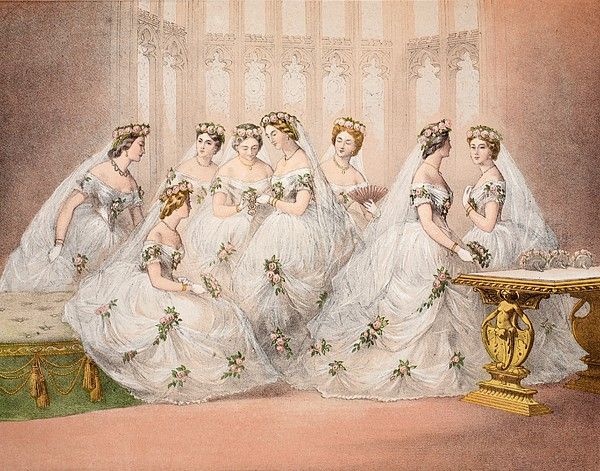
As time went on, the practice evolved. No longer tasked with physical protection, bridesmaids instead took on a symbolic role—standing by the bride as witnesses to her transition into married life. However, the need for visual differentiation became more pronounced. Weddings became events of social prestige, with the bride expected to stand out as the most radiant woman in the room. The idea of hierarchy in fashion emerged, ensuring that while bridesmaids looked beautiful, they were never allowed to upstage the bride.
The psychology of hierarchy and status
Weddings, at their core, are highly structured social events where every detail carries meaning. The bride’s attire is designed to command attention, whether it’s an ethereal white gown in a Western ceremony or an elaborately embroidered lehenga in an Indian wedding. Her look is a statement, it signifies exclusivity, luxury, and the once-in-a-lifetime nature of the moment. The selection of fabric, the intricate detailing, and even the embellishments reinforce the idea that she is the main attraction.
Bridesmaids, on the other hand, are dressed to serve a different purpose. Their role is to frame the bride and enhance her visual appeal without overshadowing her. This taps into a fundamental psychological principle—social hierarchy. In any formal gathering, visual cues help establish order and status. The wedding places the bride at the highest rank, followed by the groom, immediate family, and then the bridal party. If a bridesmaid were to wear an outfit equally as opulent as the bride’s, it would create confusion, challenging the established order of importance.

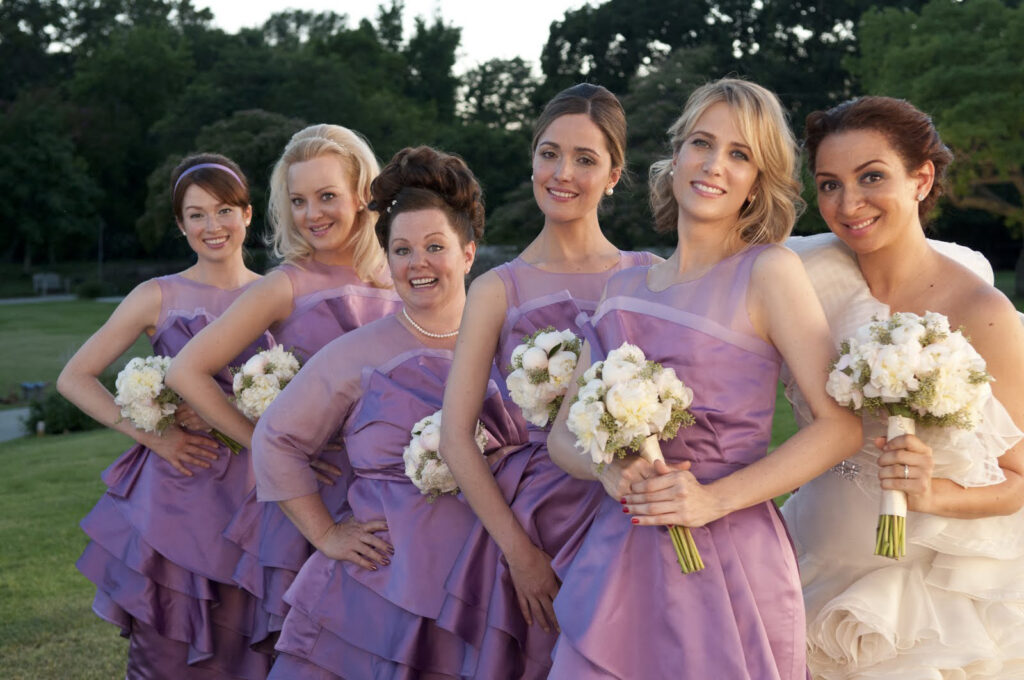
This also extends to how we perceive beauty in social settings. Psychological studies suggest that in a group, the most visually distinct person naturally draws the most attention. By ensuring that bridesmaids wear coordinated yet relatively understated dresses, the bride remains the undeniable focal point, fulfilling the subconscious expectations of the guests.
Colour psychology and symbolism
Colour is a powerful tool in wedding fashion, used to communicate emotions, traditions, and societal values. In Western weddings, the bride typically wears white—a hue that symbolises purity, new beginnings, and grace. White has long been associated with bridal elegance, dating back to Queen Victoria’s wedding in 1840, which set the standard for modern bridal fashion. Bridesmaids, in contrast, wear shades that complement but do not rival the bride’s choice—pastels, muted tones, or coordinated colours that enhance the overall aesthetic without drawing attention away from the bride.
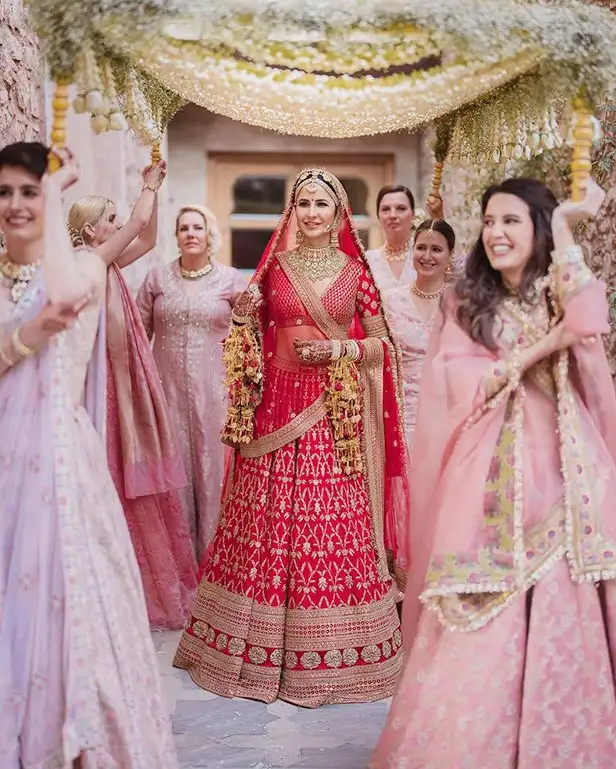
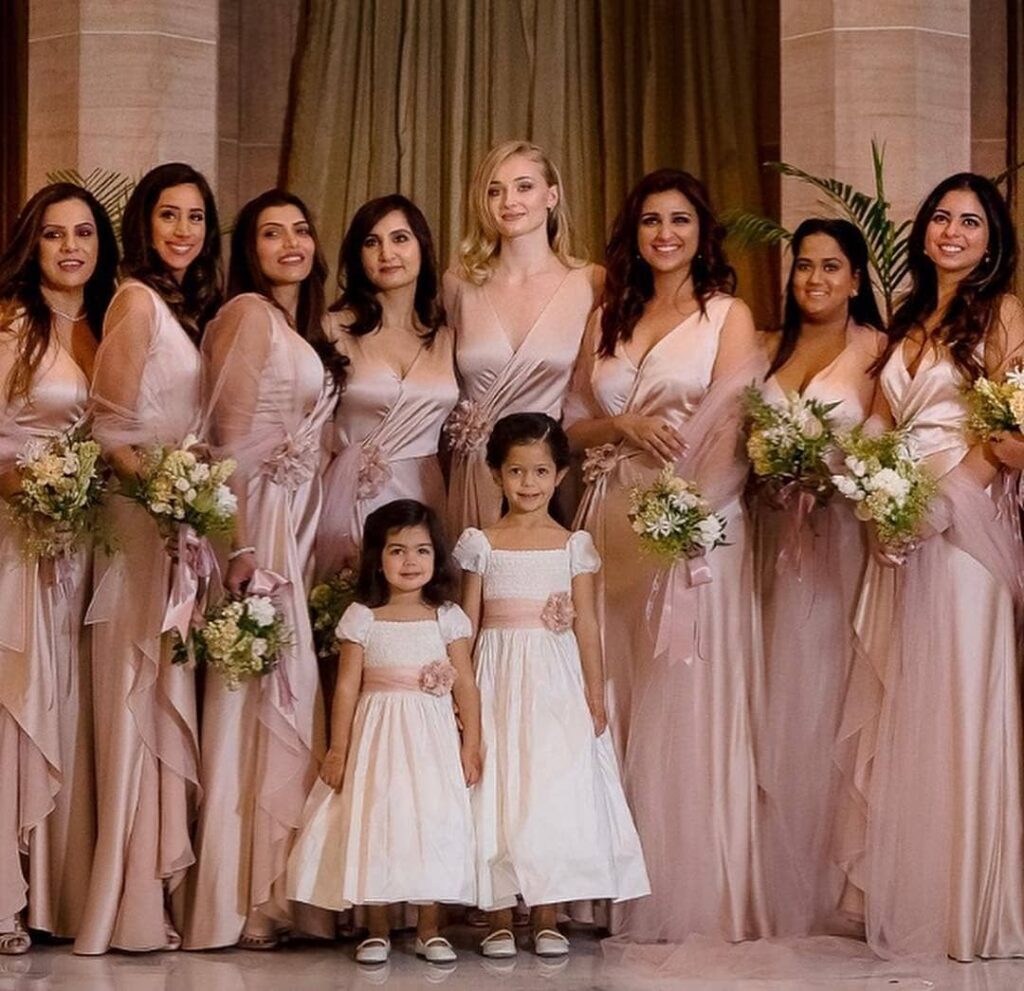
At Indian weddings, colour plays an even more significant role. Brides are often adorned in deep reds, golds, or jewel tones, each carrying a symbolic meaning. Red, the most traditional bridal colour in India, represents prosperity, fertility, and marital bliss. Gold is associated with wealth and auspiciousness. Meanwhile, bridesmaids are often seen in softer shades—peach, lilac, light pink, or pastel blue—ensuring that the bride remains the most striking figure in the room. The contrast between the bride and her bridal party is deliberate, reinforcing her importance through visual differentiation.
The bridal gaze: A carefully crafted image
Every bride wants to look perfect on her wedding day, and this perfection is carefully curated. Months, sometimes even years, are spent selecting the right dress, the right jewellery, and the right overall look. The bridal ensemble is more than just clothing—it’s a representation of personal style, cultural heritage, and social status. The bride’s appearance is supposed to be breathtaking, capturing the essence of the moment and creating a lasting memory.
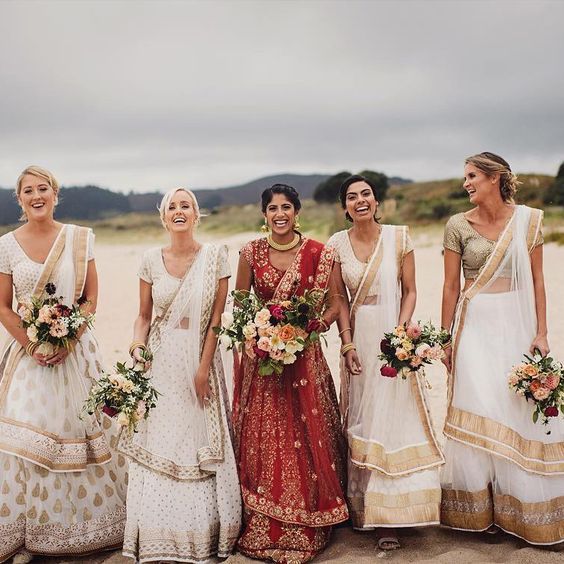
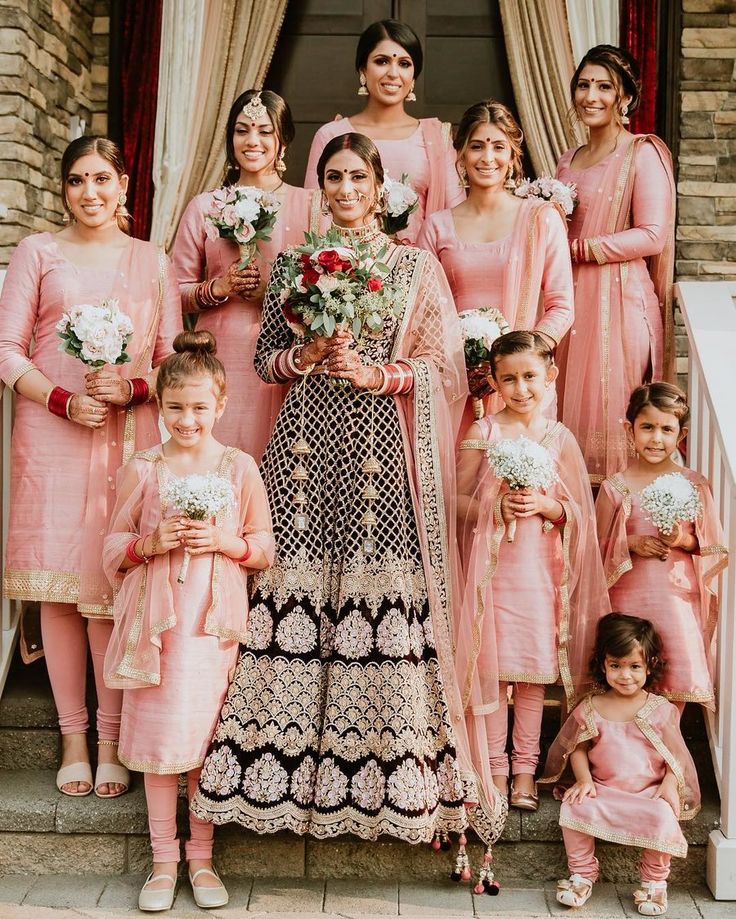
Bridesmaids, while playing an essential role, are part of this carefully composed image. Their dresses, makeup, and accessories are designed to create cohesion, ensuring a visually harmonious bridal party. They are meant to look polished and beautiful but never to the extent that they steal the limelight. This is why bridesmaids’ dresses often have simpler silhouettes, fewer embellishments, or lighter fabrics compared to the bride’s attire. Even their hairstyles and accessories are often dictated by the bride’s vision, ensuring that everything aligns with the aesthetic she has envisioned.
Cultural variations and exceptions
While the tradition of differentiating the bride from her bridesmaids is widely practiced, there are exceptions. In modern weddings, particularly in more contemporary or progressive settings, some brides choose to dress their bridesmaids in equally elaborate attire, blurring the lines between bride and bridal party. In some cultures, such as certain African and Caribbean wedding traditions, the bridal party is intentionally adorned in bold and vibrant outfits, creating a celebratory atmosphere rather than a strict visual hierarchy.
In India, the concept of matching bridesmaids’ outfits is a relatively new trend, influenced by Western weddings. While traditional Indian weddings rarely had a distinct bridesmaid role, modern brides now curate a cohesive look for their closest friends and family members. However, even in these cases, the bride’s outfit remains the most elaborate, ensuring that she remains the centrepiece of the celebration.
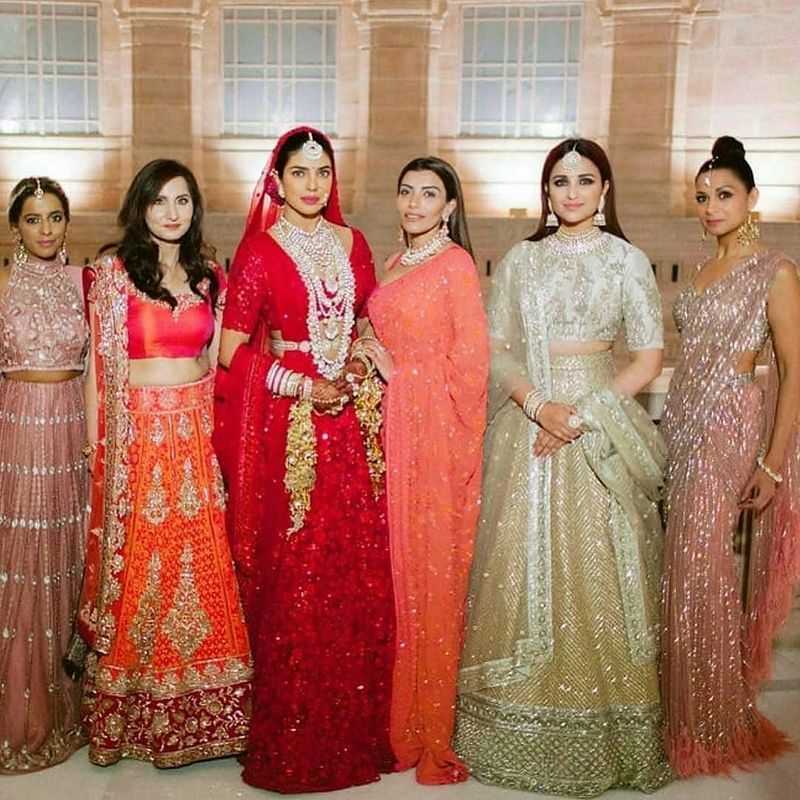
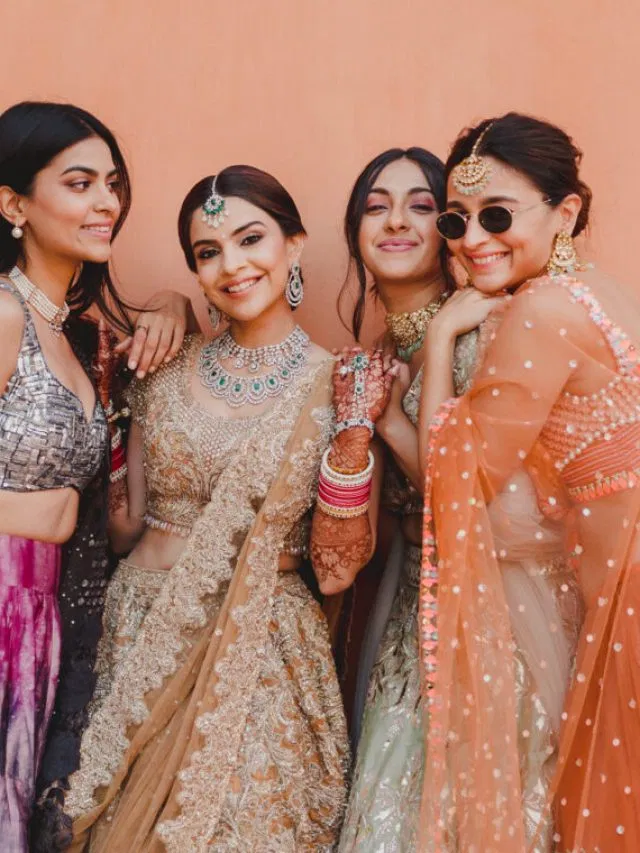
Across cultures and traditions, one truth remains unchanged, the bride must always shine the brightest. The psychology behind bridesmaids’ fashion choices is deeply rooted in history, hierarchy, and visual storytelling. Bridesmaids may be integral to the wedding, but their attire is carefully designed to complement rather than compete. Whether in a white wedding or an Indian shaadi, the wedding day is a grand narrative, and in this story, the bride is always the star. Her moment of glory is enhanced, not diminished, by the beautifully coordinated yet subtly understated presence of her bridesmaids.







